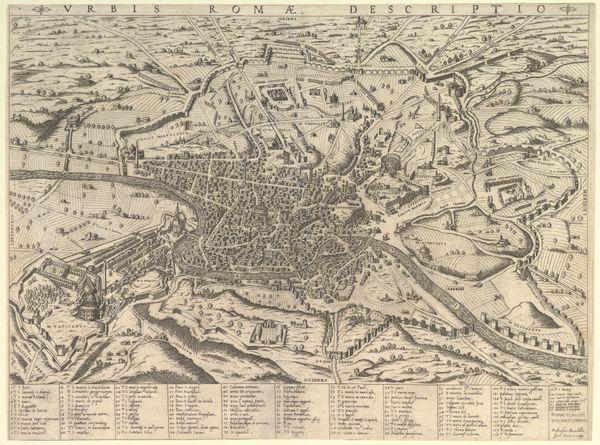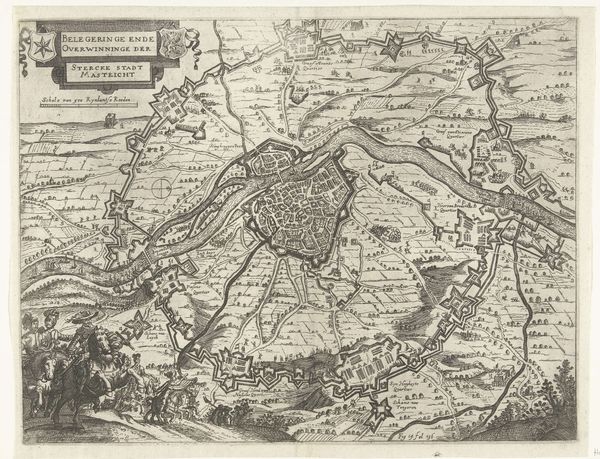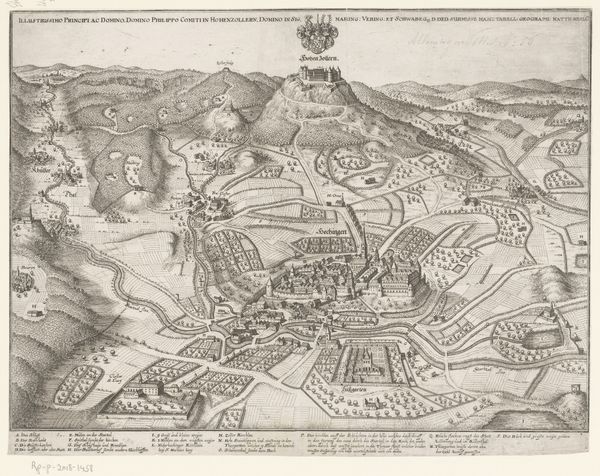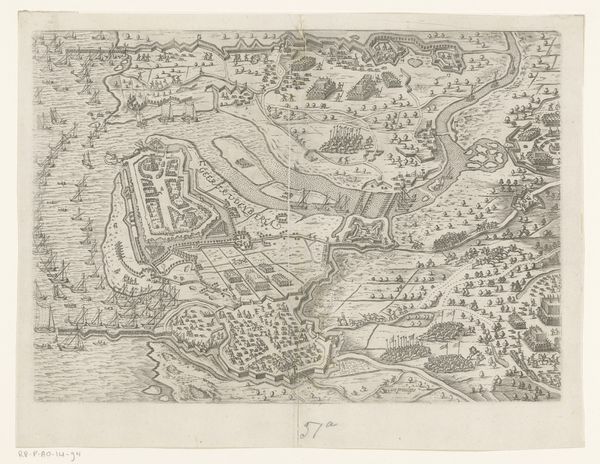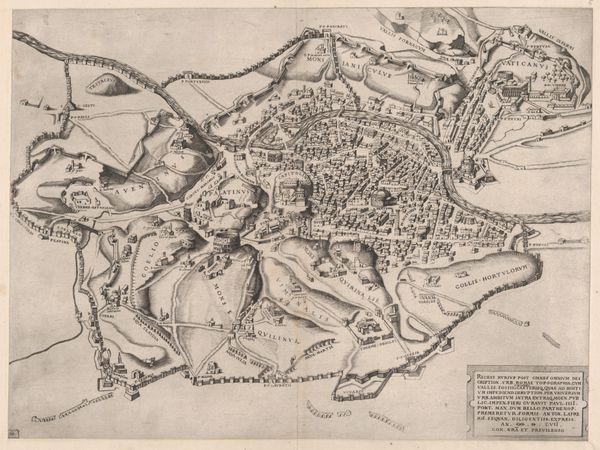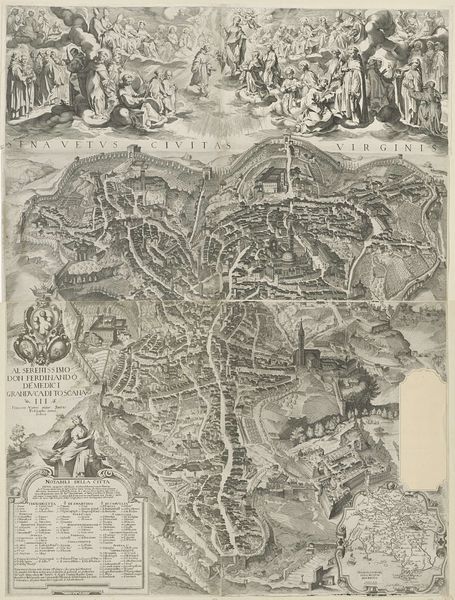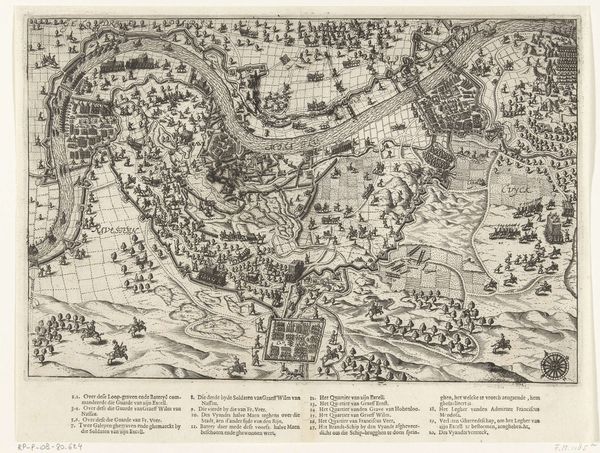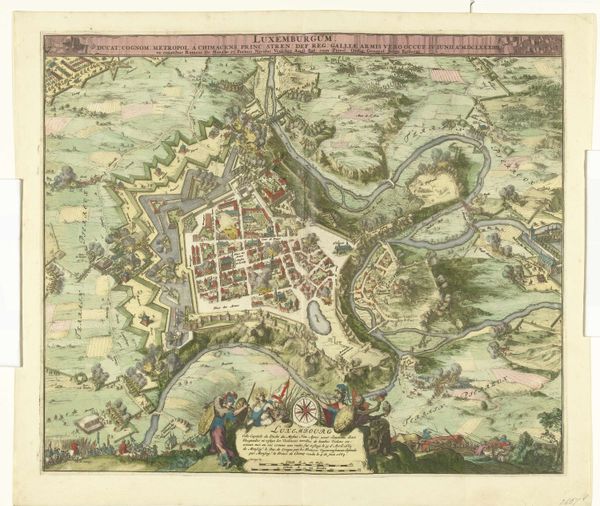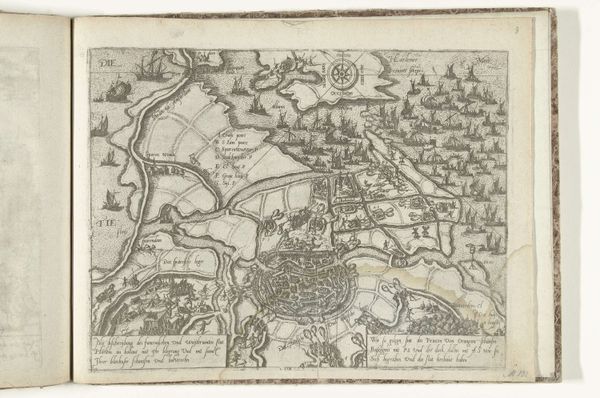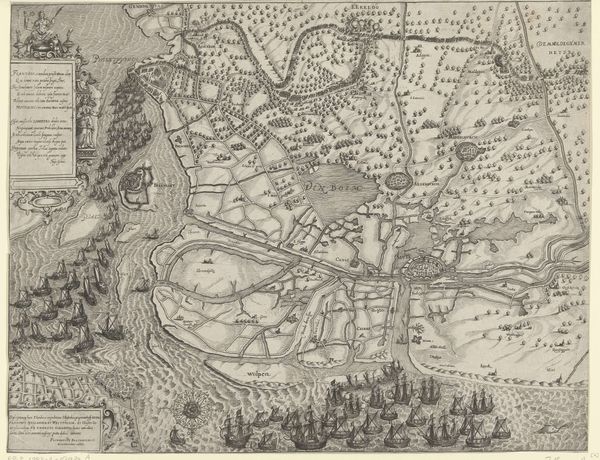
Speculum Romanae Magnificentiae: View of Rome from the North 1561
0:00
0:00
drawing, print, engraving
#
drawing
# print
#
pen sketch
#
perspective
#
line
#
cityscape
#
history-painting
#
engraving
Dimensions: sheet: 20 1/2 x 26 9/16 in. (52 x 67.5 cm) plate: 16 5/16 x 21 11/16 in. (41.4 x 55.1 cm)
Copyright: Public Domain
Curator: This intricately detailed engraving is entitled "Speculum Romanae Magnificentiae: View of Rome from the North," created in 1561 by Sebastiano di Re. It’s a fascinating example of printmaking intended to showcase the grandeur of Rome. Editor: My initial reaction is one of being overwhelmed, actually. It's incredibly detailed. I'm drawn to how the city unfolds, yet the perspective feels…artificial, almost like a stage set. I notice the consistent lines and shading. It feels both informative and stylized, rather than a realistic rendering. Curator: Indeed. It's less about faithful representation and more about communicating power, authority, and an idealized image of Rome, very much aligned with the socio-political objectives of the era. It's important to remember the Counter-Reformation was in full swing. Editor: Ah, that makes the symbolic intent more clear. The way certain landmarks seem emphasized – were they laden with religious meaning then? Curator: Absolutely. The various churches and religious sites highlighted aren't merely architectural features; they are symbols of the Catholic Church's resilience and dominance during a period of considerable turmoil and questioning of institutional authority. The act of mapping became an act of ideological assertion. Editor: Looking at it again, it seems that the engraving uses perspective to reinforce a cultural memory of the city’s glorious past but also implies future prosperity. Those symbols, like specific ruins carefully included, almost operate like allegories within the larger view. I'm drawn to how it's both topographical and emotionally suggestive. Curator: Precisely! It merges objective geographical information with subjective ideological aspirations. We, as viewers, are not simply looking at a city, but engaging with a complex narrative of faith, power, and history deeply embedded in a particular political context. It presents a curated, rather than purely observed, reality. Editor: So this image is, in essence, a very calculated statement about Rome's, and perhaps the Church’s, continued relevance, expressed through detailed symbology. It becomes more meaningful knowing this print was made in a specific time with the intention to show cultural and political prowess. Curator: Yes, understanding its historical context truly unlocks new layers of interpretation, enriching our appreciation of this fascinating, and politically charged, bird's eye view.
Comments
No comments
Be the first to comment and join the conversation on the ultimate creative platform.
